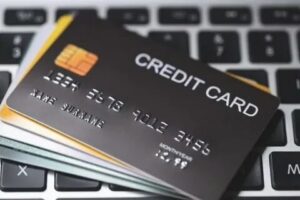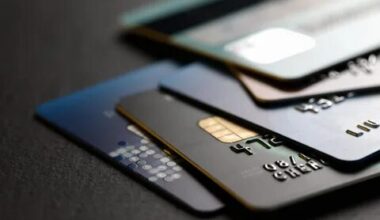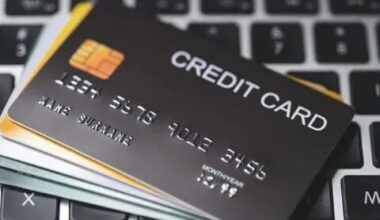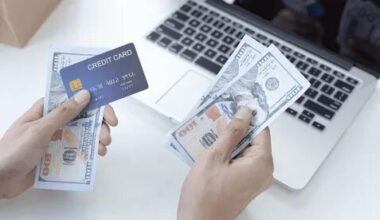Imagine this: You reach into your wallet, expect to see your credit card, and… nothing. That sinking feeling hits: “Was it stolen? Did I misplace it?” In that moment of panic, your best move is to stay calm — because you have options, and acting quickly can turn what could be a financial nightmare into a manageable hiccup.
In this blog post, we’ll walk through the full journey — from that initial “Oh no” moment to the “All clear” stage. We’ll cover what to do immediately, how to minimise damage, what to watch for later, and how to prevent it happening again. I’ll keep things clear, conversational, and packed with value — just like chatting with a trusted friend.
1. The Instant Reaction: Don’t Freeze, Act
Why you shouldn’t wait
When your credit card is lost or stolen, time is key. U.S. federal guidelines say if you report the loss before any unauthorized purchase is made, your liability can be $0. If you delay, then depending on local laws, you could be responsible for up to $50 (or more) in many cases. Many card issuers go further and offer zero-liability if you act promptly.
Delayed action? That gives a thief more time to run up charges — or use your number online. So yes — the message: act now.
First-minute checklist
Here’s a quick “do this now” list when you realise your card is missing:
- Lock or freeze the card (if your issuer offers it) so no new purchases can be made.
- Contact your card issuer or bank and report your card lost or stolen.
- Review recent transactions (via app or online) for anything unfamiliar.
- Make a note of when you realised the card was missing (date/time) — this may matter later.
What does “lock” or “freeze” mean?
Good question. Many issuers now allow you to temporarily disable the card via the mobile app or website. That means the physical card cannot be used (and often the card number is flagged) until you either unlock it or formally cancel it and get a replacement. It’s less drastic than cancelling outright if you suspect you simply misplaced it.
Quick mental transition
Think of it this way: you’ve lost the “key” to your house (the credit card). You immediately change the lock (freeze the card) and call the locksmith (issuer) to make a new key. The faster you do it, the less chance someone sneaks in.
2. Report the Loss — The Second Step That Matters
Once you’ve locked the card (or as soon as possible), the next step is a formal report: notifying your issuer and getting the ball rolling on a new card and fraud mitigation.
How to report
- Call the number on your card’s issuer website or the number on your last statement.
- Use the issuer’s mobile app or online banking — many now have “Report Lost/Stolen Card” options.
- Provide details such as: when you last used the card, where you believe you lost it (if known), and any unfamiliar charges you see.
What the issuer will do
- They will deactivate or cancel the old card number.
- They will issue a new card. This usually means a new number, a new expiry date, and a new security code (CVV).
- They may issue a virtual card for immediate online use while the physical card is mailed.
- They’ll often review your account for fraud, and may help you dispute unauthorized charges.
Timing counts
The sooner you make the call, the fewer opportunities for fraud. Some issuers say replacement cards arrive in 3-5 business days, depending on location.
Table: Key actions vs what the issuer is doing
| Your Action | Issuer’s Response | Why it matters |
|---|---|---|
| Report card lost/stolen | Cancel old card & stop new transactions | Prevents further unauthorised spending |
| Request replacement | Send a new card & account number | Restores your ability to pay and avoids disruption |
| Review recent charges | Investigate suspicious transactions | Important for fraud detection & liability limits |
| Provide updated contact details | Ensure you receive communications/replacement | Prevents delays or mis-delivery |
3. Chaos Control: Fixing the Mess and Securing Your Account
So you’ve locked your card and reported the loss — nice. Now we shift into “clean-up and lock-down” mode: making sure nothing else slips through, and you secure your overall account.
Update automatic payments & subscriptions
Chances are you had recurring payments (streaming service, phone bill, gym membership) with that card number. With a replacement card you now have:
- A new card number
- A new expiration date
- A new CVV/security code
If you don’t update these in the services tied to the old card, you may face:
- Payment declines
- Late fees or service interruption
- A hit to your credit if invoices go unpaid.
Some issuers now provide a list of your recurring payments to help you update them quickly.
Monitor your statement and credit activity
- Check your old account statements (and the new one) for unfamiliar or suspicious charges.
- Monitor if any new accounts are opened in your name (identity theft side-effect).
- Some credit-reporting services provide free alerts for changes to your file.
Secure your other digital “keys”
- Change your online banking password and any PINs/codes related to the lost card.
- Enable 2-factor authentication (2FA) whenever possible.
- Check for any linked accounts or devices (digital wallets) that may also need updating.
What about your credit score?
Here’s some good news: losing or replacing a card does not automatically hurt your credit score. Provided you handle everything properly, the account’s age, payment history and credit usage remain.
The risk comes if fraud happens and you don’t notice (e.g., missed payments, high balances from unauthorised charges) — those could damage your score.
4. Understanding Your Risks: What’s the Worst That Could Happen?
It’s helpful to understand what you’re protecting against — so you’ll appreciate the urgency and take it seriously.
Potential negative outcomes if you delay
- Unauthorized charges could accumulate on the old card number.
- High credit utilisation: a thief uses your card, racks up a large balance — this can damage your credit.
- Recurring payments fail because you didn’t update the card — you may incur late fees, your service gets cut, and your credit is affected.
- Identity theft: The thief doesn’t just use your card — they may use your information to open other accounts.
- Service disruption: You’re locked out of some payments, or subscriptions fail.
But what about the positives?
- By acting fast, you minimise damage, maintain access to your funds, and keep your financial life intact.
- Many card issuers offer zero-liability for fraudulent charges, provided you followed proper procedures.
- You have a chance to secure your broader financial picture (passwords, recurring payments, digital wallet) — you emerge stronger.
Table: Risk vs Reward of prompt action
| Outcome | Prompt Action Taken | Delay or No Action |
|---|---|---|
| Unauthorized charges | Blocked/Cancelled quickly | Charges accumulate uncontrolled |
| Credit card replacement | Swift new card, minimal disruption | Delay in replacement, possible service interruption |
| Recurring payments | Updated, continuity maintained | Payments fail, fees, damage to credit |
| Identity theft potential | Mitigated early | Larger identity fraud risk |
| Peace of mind & control | Maintained | Stress and uncertainty grow |
5. Preventive Measures: How to Reduce Future Risk
Okay, crisis handled. Now let’s build a stronger defence strategy—because while you can’t control every scenario, you can reduce your exposure and vulnerability.
Smart habits to adopt
- Keep your card in a safe place; don’t leave it exposed or unattended.
- Use mobile or digital wallets (e.g., Apple Pay, Google Pay) when possible — they often provide an additional layer of protection.
- Enable purchase alerts with your card issuer: notifications for each transaction.
- Review your account statements regularly. Small transactions may signal big problems if ignored.
- When you travel, set up travel alerts and know your card issuer’s international contact numbers.
- Maintain a secure, offline list of your card numbers and issuer contact info (just last four digits and support numbers) — handy if your wallet goes missing.
What to consider in your “card lost or stolen” kit
When you’re prepared, you reduce panic and delay. Your kit could include:
- The date you got the new card & last four digits of the old card (just for your records).
- Issuer customer-service contact numbers (and international numbers if you travel).
- A reminder list of recurring payments you use (so you can update quickly).
- A note to change your related passwords if necessary.
Table: Preventive measures summary
| Preventive Action | Benefit |
|---|---|
| Use digital wallet instead of physical card | Less exposure if you lose wallet |
| Enable purchase alerts | Fast detection of unusual activity |
| Review account and credit reports regularly | Early detection of fraud or misuse |
| Keep issuer contact info accessible | Faster response if card is lost |
| Maintain manageable record of card & payments | Easier updates & tracking |
| Secure your wallet and physical cards | Reduces risk of misplacement/theft |
Frequently Asked Questions (and Straight Answers)
“Will losing my card hurt my credit score?”
Probably not — if you report it quickly and ensure no delinquent payments happen. Replacing the card does not close your account or reset history.
“What happens to recurring payments on my old card?”
You’ll need to update them with your new card number, expiry, and CVV. If you don’t, payments might fail and you could face late fees or even interruption in your services.
“Do I ever have to pay for fraudulent charges?”
In many jurisdictions (like the U.S.), there is $0 liability if you report the card lost/stolen before it’s used. If the thief already used it, you may be liable for up to a small amount (often $50) depending on local regulation.
“Can I keep using the old card if I find it after reporting it lost?”
Once you’ve reported it lost/stolen, the issuer will usually cancel the old card and issue a new one — you can’t just resume using the old one safely. If you just misplaced it temporarily and did a “lock” instead of a full cancellation, you might find and unlock—but that depends on your issuer.
“What if my card number (not the card itself) was compromised online?”
Same attitude applies: report it, get a new card number, monitor for fraud. The risk may be slightly different (because the physical card isn’t missing) but your response is similar. Many issuers treat this as “card possibly compromised” and act swiftly.
Real-Life Example: How It Might Play Out
Let’s walk through a scenario to make it relatable.
Meet Joyce. She lives in Lagos, Nigeria, and uses her credit card for grocery shopping, streaming, and some online subscriptions. One evening, she realises her wallet is missing—and inside it, her main credit card.
Instant Reaction:
Joyce logs into her bank’s mobile app and locks the card. She then calls the issuer and reports it lost. Good move.
Next Steps:
The issuer cancels the old number, issues a new one and — because Joyce asked — provides a virtual card number for immediate online use.
Chaos Control:
Joyce remembers she has five subscriptions linked to the old card number. She sets aside time that evening and updates each one: streaming service, gym membership, phone bill, a magazine subscription, and cloud storage. She avoids missed payments.
Monitoring:
Over the next week she checks her account statements, sees no suspicious charges. She also changes her online banking password and enables two-factor authentication.
Prevention:
Joyce decides she’ll carry the card only when she actually needs it, uses mobile wallet for most payments, sets alerts moving forward (“any transaction over ₦20,000 notify me”), and stores her issuer’s number in her phone under “Credit Card – Support”.
Because Joyce acted fast and systematically, what could have been a crisis turned into a quick interruption—and she came out stronger and more prepared.
A Thoughtful Conclusion: Stay Calm, Act Swiftly, Stay Safe
Losing your credit card — or discovering it has been stolen — can feel overwhelming. It can bring up fear, uncertainty, even a bit of guilt (“Did I lose it? Did someone take it in the restaurant?”). But here’s the truth: You are not powerless. By acting quickly, you hand the power back to yourself.
When you:
- Lock first.
- Report immediately.
- Monitor, update & secure continuously.
…you turn a potential disaster into something you handle.
Don’t let the incident become a stressor that wrecks your finances. Instead, treat it like a minor system overload: you caught it early, you resolved it fast, you learned how to be stronger for next time.
And lastly — think about your financial safety net. How you carry your cards, how you protect your online accounts, how fast you respond if something goes wrong. With the steps above, you are not just recovering — you’re upgrading your security posture.





